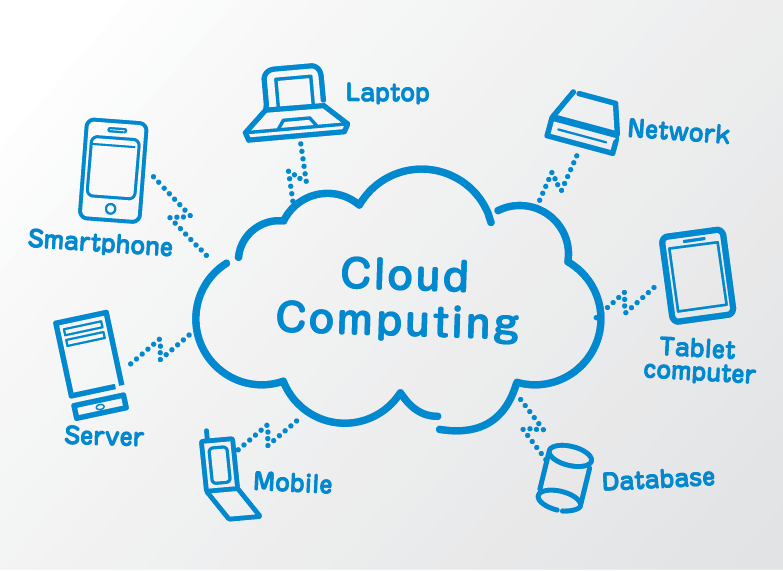Few technological advancements in the present era have had the same significant influence as cloud computing. Revolutionizing the way data is stored, processed, and accessed, cloud computing has become the backbone of countless industries, powering everything from e-commerce platforms to cutting-edge AI algorithms. However, the landscape of cloud computing is not static; it is continuously evolving, driven by the relentless pursuit of innovation. In this article, we delve into some of the latest and most exciting advancements in cloud computing.
Serverless Computing:
Serverless computing is one of the most revolutionary inventions of the last several years. This approach abstracts away the infrastructure management, allowing developers to focus solely on writing and deploying code. By eliminating the need to provision and manage servers, serverless computing enables greater scalability, reduces operational overhead, and accelerates time-to-market for applications. Leading cloud providers like AWS Lambda, Google Cloud Functions, and Microsoft Azure Functions offer robust serverless platforms that empower developers to build and deploy applications with unprecedented ease and efficiency.
Edge Computing:
While traditional cloud computing relies on centralized data centers, edge computing brings computation closer to the data source. By processing data at the edge of the network, near the devices or sensors generating it, edge computing minimizes latency, reduces bandwidth usage, and enhances real-time responsiveness. This paradigm shift is particularly crucial for applications requiring low-latency interactions, such as autonomous vehicles, industrial automation, and augmented reality. With the proliferation of Internet of Things (IoT) devices, edge computing is poised to play an increasingly vital role in the digital ecosystem.
Multi-cloud and Hybrid Cloud:
Enterprises are increasingly adopting multi-cloud and hybrid cloud strategies to leverage the strengths of different cloud providers and deployment models. Multi-cloud architectures enable organizations to avoid vendor lock-in, optimize performance, and enhance resilience by distributing workloads across multiple cloud platforms. Hybrid cloud environments seamlessly integrate on-premises infrastructure with public and private clouds, offering flexibility, scalability, and data sovereignty. As businesses navigate complex regulatory requirements and dynamic market conditions, multi-cloud and hybrid cloud approaches provide the agility and adaptability needed to thrive in the digital age.
AI and Machine Learning in the Cloud:
The intersection of cloud computing and artificial intelligence (AI) is driving groundbreaking innovations across diverse domains. Cloud providers offer a rich array of AI and machine learning services, ranging from pre-trained models and automated machine learning (AutoML) to custom model training and inference. These services democratize AI, empowering organizations of all sizes to harness the power of machine learning without requiring specialized expertise or infrastructure. With AI-powered capabilities such as natural language processing, computer vision, and predictive analytics readily accessible via the cloud, businesses can unlock new insights, optimize processes, and deliver personalized experiences at scale.
Quantum Computing:
While still in its infancy, quantum computing holds the potential to revolutionize cloud computing as we know it. Quantum computers promise to perform calculations at speeds exponentially faster than classical computers, enabling breakthroughs in areas such as cryptography, optimization, and drug discovery. Cloud providers are already laying the groundwork for quantum computing adoption, offering quantum-as-a-service (QaaS) platforms to developers and researchers. As quantum hardware matures and algorithms evolve, quantum computing is poised to usher in a new era of innovation, reshaping industries and pushing the boundaries of what’s possible in the digital realm.
Conclusion:
Cloud computing innovations continue to propel technology forward, driving agility, scalability, and efficiency across industries. From serverless computing and edge computing to multi-cloud and hybrid cloud architectures, the cloud ecosystem is evolving to meet the evolving needs of businesses and consumers alike. With advancements in AI and machine learning democratizing access to advanced analytics and insights, and the promise of quantum computing on the horizon, the future of cloud computing is brighter and more exciting than ever before. As organizations embrace these innovations, they will unlock new opportunities, drive digital transformation, and shape the world of tomorrow.
